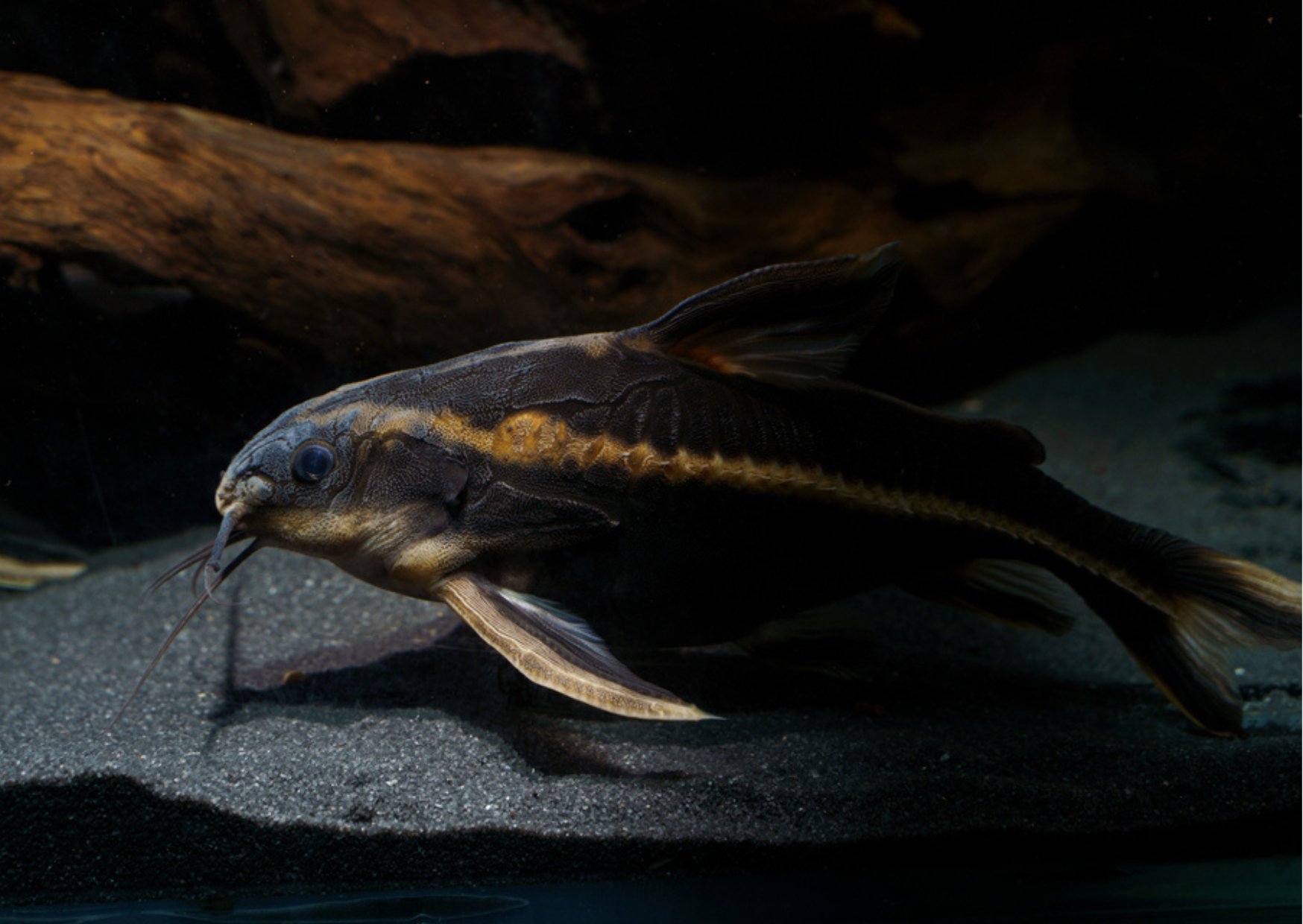Next working day delivery with Royal Mail Tracked 24
Fish Profiles | Talking Catfish

Fish Profiles | Talking Catfish
The Talking Catfish, commonly known as the Striped or Spotted Dora catfish (Platydoras armatulus) is also known as the Chocolate or Raphael catfish, and is native to the Amazon, Paraguay–Paraná and lower Orinoco basins in South America. The Talking Catfish is a peaceful nocturnal catfish popular with aquarium fish keepers due to its inquisitive and passive nature. The Dora catfish will make squeaking noises while out of water, hence why they are called talking catfish.
Talking Dora Catfish prefer a soft sandy substrate as they like to burrow in sand and soft river bottoms. They like to eat crustaceans such as river shrimp and half-shell clams, and will forage for organic debris. Do not keep with ornamental shrimp or snails, they will eat them! Being nocturnal, they will be more active at night.
Take care not to catch the Talking Raphael catfish with a fish net because they are prone to sticking out their pectoral fin spines in a very rigid manner, especially if stressed. Untangling these spines from a net is difficult and dangerous to both handler and fish.
Are Talking Dora Catfish aggressive?
Talking Catfish are not known to show aggression towards other fish. They may eat smaller fish or shrimp, usually because they mistake them for food, but they won't harm other creatures of a similar size. Generally, Talking Raphael Catfish are considered of peaceful temperament.
How fast do Talking Dora Catfish grow?
Talking catfish grow to reach between seven and nine inches in length. This catfish species grows very slowly, at a rate of around one inch every 1-2 years until reaching full adult size.
Features
Typical size in store: 2" / 5cm
Maximum size: 9" / 23cm
Origin: South America
Family: Doradidae
Temperament: Peaceful
Lighting requirement: low
Ideal number kept together: 1+
Water conditions
Ideal pH: 6.0–8.0
Water flow: low
Ideal temperature: 22–26 °C
Ease of care
Talking catfish are easy to moderate to care for. Hardy and peaceful, talking catfish can grow moderately large but at a slow rate. Exercise caution with spiky fins. These catfish are soft-skinned, so exercise care when administering tank treatments.
Feeding
Feed talking catfish a mixture of algae wafer and catfish pellet dry food. Live feeder shrimp and frozen shrimp to supplement.
Breeding
Talking catfish are egg layers. Not commonly bred in household aquaria. Females tend to be larger in the belly, while males appear darker in colour, with a slightly yellow tone.
Life Span
Talking catfish can live 10+ years in perfect aquarium conditions.
To browse our range of catfish food online please click here.
To browse our range of soft sandy substrate for catfish aquariums please click here.
Photo credit(s): Canva Pro Licence / Shutterstock












